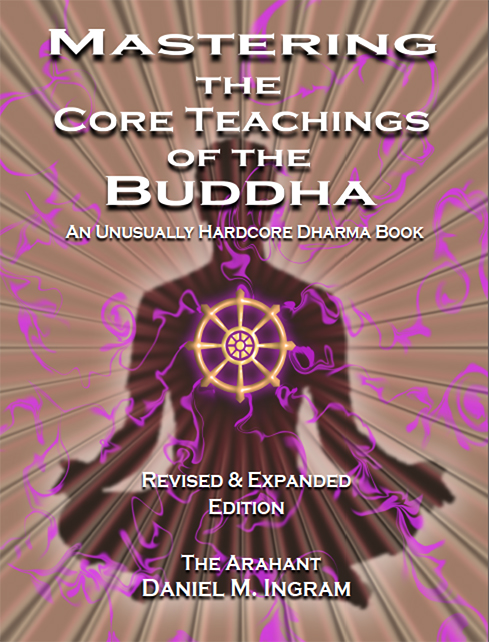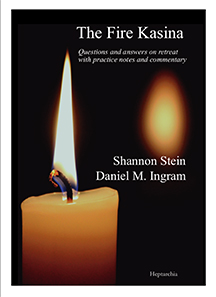The Ultimate Reality versus Unreality Models
← The Social Models | The Meaning Models →
Some traditions strongly emphasize that there are aspects of reality that have some ultimate status, and you will immediately notice that I am clearly influenced by those traditions. By “ultimate”, the models generally mean something along the lines of “irreducible”, “non-negotiable”, “foundational”, “primary”, or “fundamentally true”. From a Theravada point of view, this is generally broken down into three ultimate dharmas, specifically physical phenomena, mental phenomena, and nibbana. This is problematic, as it seems to imply that these are stable aspects. This view might be reinforced by texts such as the Abhidhamma, which basically defines itself as a manual of ultimate or irreducible aspects of phenomenal reality, particularly the sections that list mind-moments that might occur in various sequences.
There are pros and cons to this sort of presentation. Advocating that people ground their attention solidly in physical and mental sensations and realizing what is meant by nibbana is clearly a very good idea, leading in practice to some excellent, useful effects. That said, it would be easy to read this and similar bits of Theravada theory as reifying those aspects of experience as existing in some stable or absolute way, and, in fact, the Mahayana and Vajrayana often read the Theravada texts exactly this way. Were we to investigate both the digital (particle model) and analog (wave model) aspects of our sensate reality clearly enough, as advocated by techniques such as vipassana, we would see through this possible interpretation of things existing as stable particles. However, it remains a persistent source of criticism of the Theravada by the other traditions. It is interesting to note that the Buddhist tradition that is most prone to being billed as a renunciate tradition bent on dispassion and escape from the world still manages to balance this with a foundation strongly grounded in this sensate reality.
Some of the traditions will instead advocate for a conceptual framework that views reality as “dreamlike”, “unreal”, and use similar terms to describe what they are pointing to, concepts that might be skillfully used but are easily misinterpreted or misapplied. Such terms work very well for some practitioners, helping to unstick them from adhering to views about stable realities and to loosen unskillful aspects of attachment. It is a very different meaning system with strong implications for practice that will vary depending on the predilections of the practitioner.
Those who are naturally of a greedy, pleasure-seeking disposition may benefit from having their sense that there is anything to cling to shaken by pointing out such qualities to them and advocating that they practice through such a filter (i.e. that what seems “real” might not be as it seems). On the other hand, those who are more aversive and more prone to dissociation or symptoms of derealization may find that such teachings push them too far from a clear investigation of what is going on here and now and into more delusional modes that are detached from what is actually going on. It is interesting to notice that traditions that are billed as strongly advocating for a bodhisattva ideal, in which one works compassionately for the salvation of all beings, still balances this with the notion that none of these beings are real in any ultimate sense.
Related to this discussion are academic and philosophical questions that might be categorized as the “essentialist” versus “constructionist” debates. You also occasionally see these discussions among accomplished practitioners, but it is much less common for them to take it very seriously. Essentialism states that these practices are designed to reveal something about reality that is universally true, always findable in all times, places, cultures, and humans, something intrinsic to the nature of experience. Constructionists state that these traditions and practices instead create a model of an improved, revised, idealized reality, and then go on to rewire and remodel reality at its core to try to make it conform to the ideal. Weighty tomes have been written about these topics, but I will weigh in without lengthy elaboration: wisdom training is essentialist, and morality and concentration trainings are constructionist. Said another way, anything on the spiritual path that is truly essentialist is the domain of wisdom trainings, and anything that is truly constructionist is the domain of the other two trainings.
Mature traditions contain skillful counterbalancing emphases to help reduce the tendency to give in to the shadow sides and blind spots of their various doctrines and practices. One of the primary ways they counterbalance their own conceptions of the highest abstract ideals of practice is to incorporate seemingly contradictory teachings about the foundations of the ordinary world. Still, in terms of meaning, the traditions are clearly very different in some key ways, as they continue to point out again and again. Practitioners will generally resonate with one way or the other of framing practice and experience, though this can and often does change with time, and so it is good that options are offered, as those meanings that resonate with us drive motivation to practice. Thus, we come to the meaning models.

